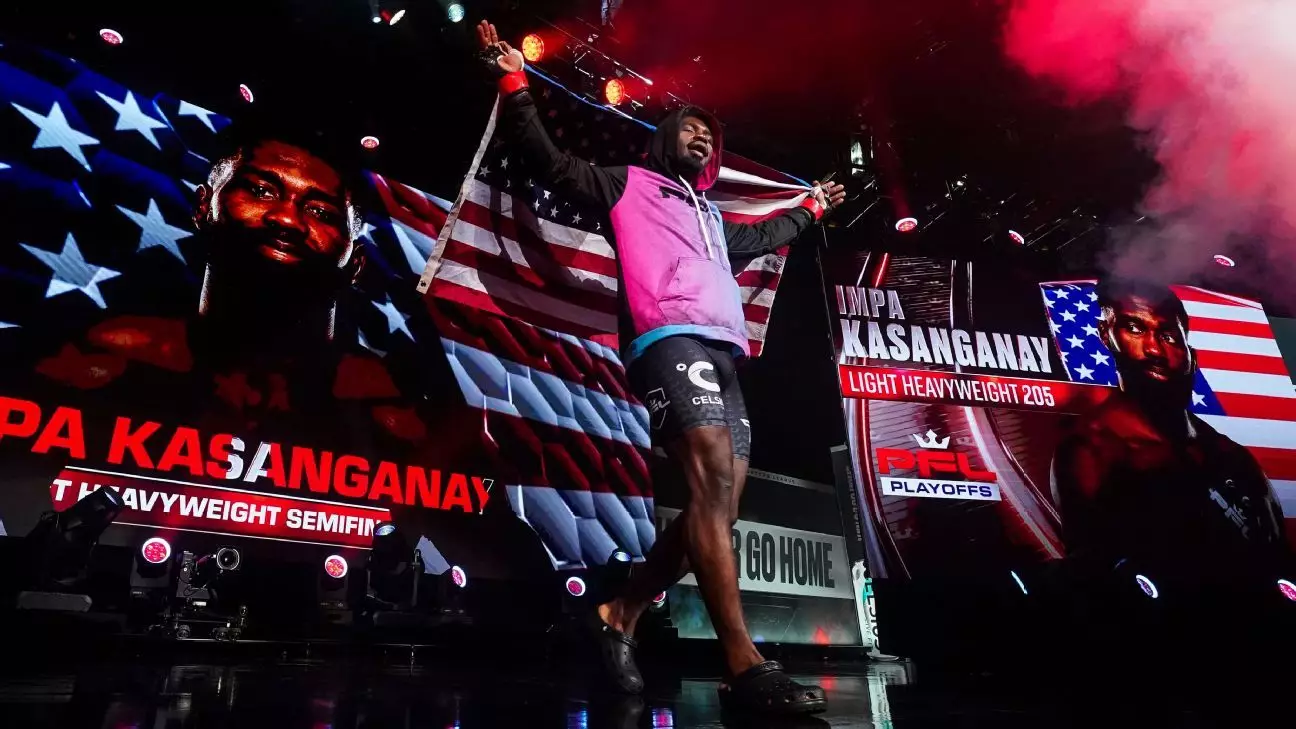As the Professional Fighters League (PFL) gears up for its 2025 season, the organization is poised to unveil a revised structure that promises to reshape the landscape of mixed martial arts (MMA) competition. Set to launch on April 3 in Orlando, Florida, this new season is notable not just for its fresh roster of fighters but also for a groundbreaking tournament format that diverges dramatically from its earlier seasons. The previous version of the PFL operated as a typical league, awarding points based on fighters’ performances over two regular-season bouts, which concluded in a playoff scenario to crown champions across various weight classes, each securing a lucrative $1 million prize.
Yet, under the new tournament structure, fighters will now vie for a $500,000 prize in eight distinct weight classes. The restructured approach enables fans to engage more directly with the competition, creating a sports spectacle that is more akin to a knockout tournament than a traditional league. PFL’s move to this tournament-style format heralds an exciting paradigm shift that could reignite viewer interest and broaden its reach, particularly given the increased stakes involved.
Welcoming New Blood and Expanding Divisions
To elevate the competitive landscape, the PFL has made notable additions to its division lineup, reintroducing the middleweight category and adding a bantamweight division, thereby revitalizing the promotional potential of the organization. The acquisition of Bellator MMA expanded its talent pool significantly, with top-tier fighters like Patchy Mix entering the picture to further bolster competition. However, the omission of several key fighters from the tournament brackets raises questions. While the absence of the undefeated women’s flyweight champion Dakota Ditcheva and last season’s champions in numerous weight classes prompts speculation about their future engagements, it also creates opportunities for emerging talent to claim their share of the spotlight.
Notably, the shift in focus toward lesser-known fighters brings an unpredictability that fans crave in sports. It presents a chance for underdog stories to unfold, as fighters look to carve out their names in a fierce competitive environment. With compelling narratives waiting to be spun, there is an undercurrent of excitement as fans anticipate who will emerge triumphant in this bold new structure.
Strategic Venue Choices and Fight Cards
The PFL’s decision to centralize its events at Universal Studios in Orlando for the opening round is a calculated move aimed at delivering a more polished and immersive experience for fans. This consolidation could lead to enhanced production values and tighter logistics, potentially providing audiences with a more cohesive viewing experience. The four fight cards scheduled to happen consecutively give fans the chance to witness a whirlwind of action, creating a festival-like atmosphere and drawing in larger crowds.
After the initial events, the semifinals and finals will venture out to diverse venues, bringing the excitement to multiple locations. Each of these locales offers the chance for regional audiences to engage with the organization on a more personal level, further enhancing the tactical aspects of fan engagement. The PFL’s commitment to a varied location strategy could serve to solidify its footprint in the global MMA arena.
Rule Changes and Evolving Fighting Styles
A key element in the PFL’s transformation for 2025 is the introduction of elbows in fights—a departure from the previous ban on this technique. This rule change promises to elevate the intensity of bouts and opens up the potential for more dynamic fighting styles. While allowing elbows could lead to increased finishes and more captivating moments, it raises concerns about fighter safety and recovery duration.
When fighters are compelled to compete as frequently as three times in five months, this rule’s implications must be carefully monitored for health and performance. The inclusion of such a significant change reflects the organization’s understanding of the evolving nature of fighting strategies and combat styles, paving the way for an exciting battle for supremacy among the competitors.
Now, through this evolution in rules and format, the PFL has set the stage for an enticing mix of strategy, athleticism, and resilience. This new chapter promises to be as thrilling as it is unpredictable, providing a fertile ground for sensational narratives and unforgettable fights. The backdrop of enhanced competition and an influx of new fighters will ensure that every round unfolds with heightened stakes and dramatic flair. All eyes will be on Orlando, as the PFL’s latest iteration hits the ground running with bold aspirations for its future.

